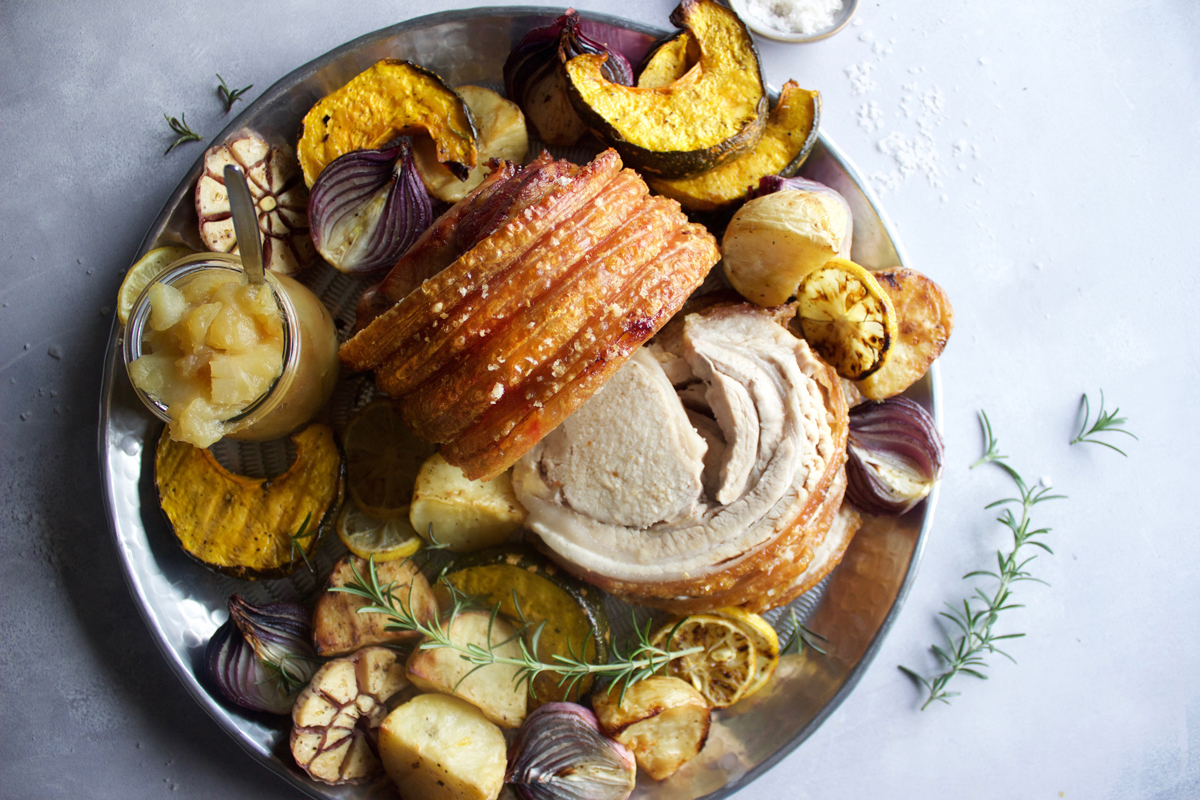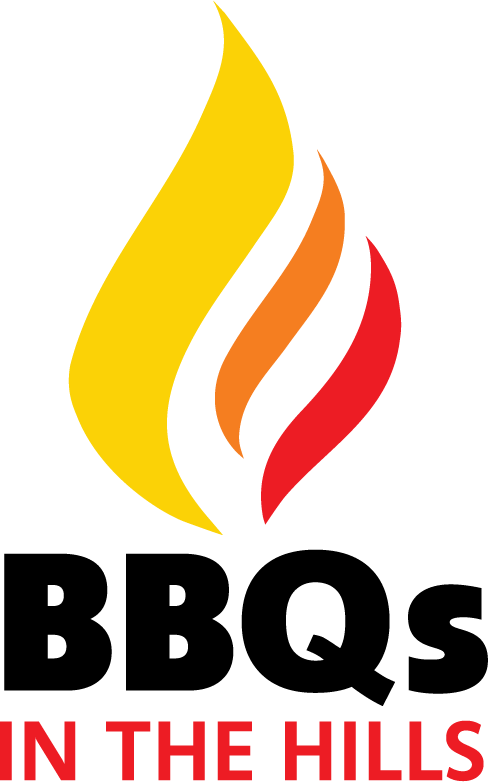Rolled Pork Loin Roast with Crackling

The key to the perfect pork roast with crackle is starting with a great piece of meat and setting your barbecue up correctly for roasting at high temperatures at the beginning to crackle the skin.
Prepare the pork loin roast (see tips for additional information). Score the skin and truss the roast if the butcher hasn’t already done so.
Ensure your barbecue is clean and free from any grease or debris. Prepare your barbecue for indirect cooking over high heat (230°C -260°C). If you are using a Weber® Q barbecue, set up your barbecue with a convection tray and a trivet.
Lightly coat the pork loin with olive oil and season with salt all over, rubbing the salt into the score marks. To estimate the cooking time, measure the height of the pork roast through its thickest part and cook for 1 minute per millimetre for a medium doneness. For example, if the roast is 90mm thick, cook for 90 minutes.
Roast the pork over indirect high heat, with the lid closed, for 20 to 30 minutes to crackle the skin; avoid lifting the lid during this time.
Adjust the barbecue temperature to indirect medium heat (190° to 230°C), the roast setting, and continue to cook over indirect medium heat for the remaining cooking time, or until the internal temperature reaches 60°C for a medium result. The internal temperature will continue to rise 3°C to 6°C while resting (final doneness temperature for Pork is 63°C for medium, 68°C for medium well).
Once the pork has cooked, leave to rest for 15 minutes before carving. Remove the butcher’s twine, carve and serve with the apple sauce.
1. Tips for Buying: It is best to buy a piece of skin-on pork loin with the belly attached from the butcher. Avoid buying vacuum sealed pork, which has been packed in plastic, as it is much harder to crackle.
2. Scoring a pre-rolled (trussed) roast: If the butcher hasn’t already scored the skin; Score the skin at 1cm intervals around the roast, being careful not to cut the twine.
3. Scoring a piece of pork loin and belly (not yet rolled/trussed): If the butcher hasn’t already scored the skin; score the skin at 1cm intervals along the length of the roast. If needed, remove a section of the rind from above the loin meat. This is done because if you roll the belly around the loin and there is rind wrapped up inside the roast, this will be rubbery when you serve it.
4. Trussing: tightly roll the roast, and truss with butcher’s twine.
5. If the pork has cooked but the rind hasn’t crackled, remove the rind and return the rind to the barbecue and roast over indirect medium heat (190°C to 230°C) for 15 minutes to crackle whilst the pork roast is resting.
Ingredients
Directions
Prepare the pork loin roast (see tips for additional information). Score the skin and truss the roast if the butcher hasn’t already done so.
Ensure your barbecue is clean and free from any grease or debris. Prepare your barbecue for indirect cooking over high heat (230°C -260°C). If you are using a Weber® Q barbecue, set up your barbecue with a convection tray and a trivet.
Lightly coat the pork loin with olive oil and season with salt all over, rubbing the salt into the score marks. To estimate the cooking time, measure the height of the pork roast through its thickest part and cook for 1 minute per millimetre for a medium doneness. For example, if the roast is 90mm thick, cook for 90 minutes.
Roast the pork over indirect high heat, with the lid closed, for 20 to 30 minutes to crackle the skin; avoid lifting the lid during this time.
Adjust the barbecue temperature to indirect medium heat (190° to 230°C), the roast setting, and continue to cook over indirect medium heat for the remaining cooking time, or until the internal temperature reaches 60°C for a medium result. The internal temperature will continue to rise 3°C to 6°C while resting (final doneness temperature for Pork is 63°C for medium, 68°C for medium well).
Once the pork has cooked, leave to rest for 15 minutes before carving. Remove the butcher’s twine, carve and serve with the apple sauce.
1. Tips for Buying: It is best to buy a piece of skin-on pork loin with the belly attached from the butcher. Avoid buying vacuum sealed pork, which has been packed in plastic, as it is much harder to crackle.
2. Scoring a pre-rolled (trussed) roast: If the butcher hasn’t already scored the skin; Score the skin at 1cm intervals around the roast, being careful not to cut the twine.
3. Scoring a piece of pork loin and belly (not yet rolled/trussed): If the butcher hasn’t already scored the skin; score the skin at 1cm intervals along the length of the roast. If needed, remove a section of the rind from above the loin meat. This is done because if you roll the belly around the loin and there is rind wrapped up inside the roast, this will be rubbery when you serve it.
4. Trussing: tightly roll the roast, and truss with butcher’s twine.
5. If the pork has cooked but the rind hasn’t crackled, remove the rind and return the rind to the barbecue and roast over indirect medium heat (190°C to 230°C) for 15 minutes to crackle whilst the pork roast is resting.
